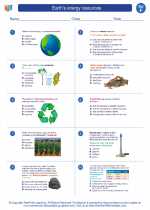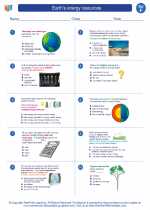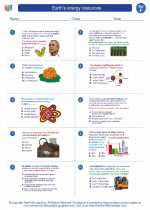Earth's energy resources -> geothermal energy
Geothermal Energy
Geothermal energy is the heat that comes from the sub-surface of the earth. It is contained in the rocks and fluids beneath the earth's crust and can be found as far down to the earth's hot molten rock, magma. This energy can be harnessed and used for various applications, such as electricity generation, heating, and cooling.
How is Geothermal Energy Formed?
The earth's core, made of iron and nickel, is extremely hot, reaching temperatures as high as 9000°F (5000°C). This heat is continuously produced through the radioactive decay of minerals. The heat from the core causes the mantle to be semi-fluid, which in turn heats the water and rock above it, creating geothermal energy.
Types of Geothermal Energy
There are three main types of geothermal energy:
- Geothermal Electricity Production: This involves using steam or hot water from the earth's crust to power turbines, which then generate electricity.
- Direct Use Applications: This involves using the hot water from geothermal reservoirs to heat buildings, greenhouses, or for industrial processes.
- Geothermal Heat Pumps: This technology uses the constant temperature of the earth as a heat source in the winter and a heat sink in the summer to heat and cool buildings.
Benefits of Geothermal Energy
There are several benefits of utilizing geothermal energy:
- It is a renewable and sustainable source of energy.
- It produces very low emissions and has a small environmental footprint.
- It provides a constant and reliable source of energy.
- It can be used for various applications, from electricity generation to heating and cooling.
Challenges of Geothermal Energy
Despite its benefits, geothermal energy also poses some challenges:
- High upfront costs for drilling and exploration.
- Location-specific - geothermal resources are not evenly distributed around the world.
- Potential for depletion of geothermal reservoirs if not managed properly.
- Potential for release of harmful gases and minerals during exploration and drilling.
Study Guide
To understand geothermal energy better, here are some key topics to study:
- Formation of geothermal energy
- Types of geothermal energy applications
- Advantages and disadvantages of geothermal energy
- Technologies used to harness geothermal energy
- Environmental impact of geothermal energy
Understanding these topics will provide a comprehensive understanding of geothermal energy and its potential as a sustainable source of power.
.◂Science Worksheets and Study Guides Sixth Grade. Earth's energy resources

 Worksheet/Answer key
Worksheet/Answer key
 Worksheet/Answer key
Worksheet/Answer key
 Worksheet/Answer key
Worksheet/Answer key
 Vocabulary/Answer key
Vocabulary/Answer key
